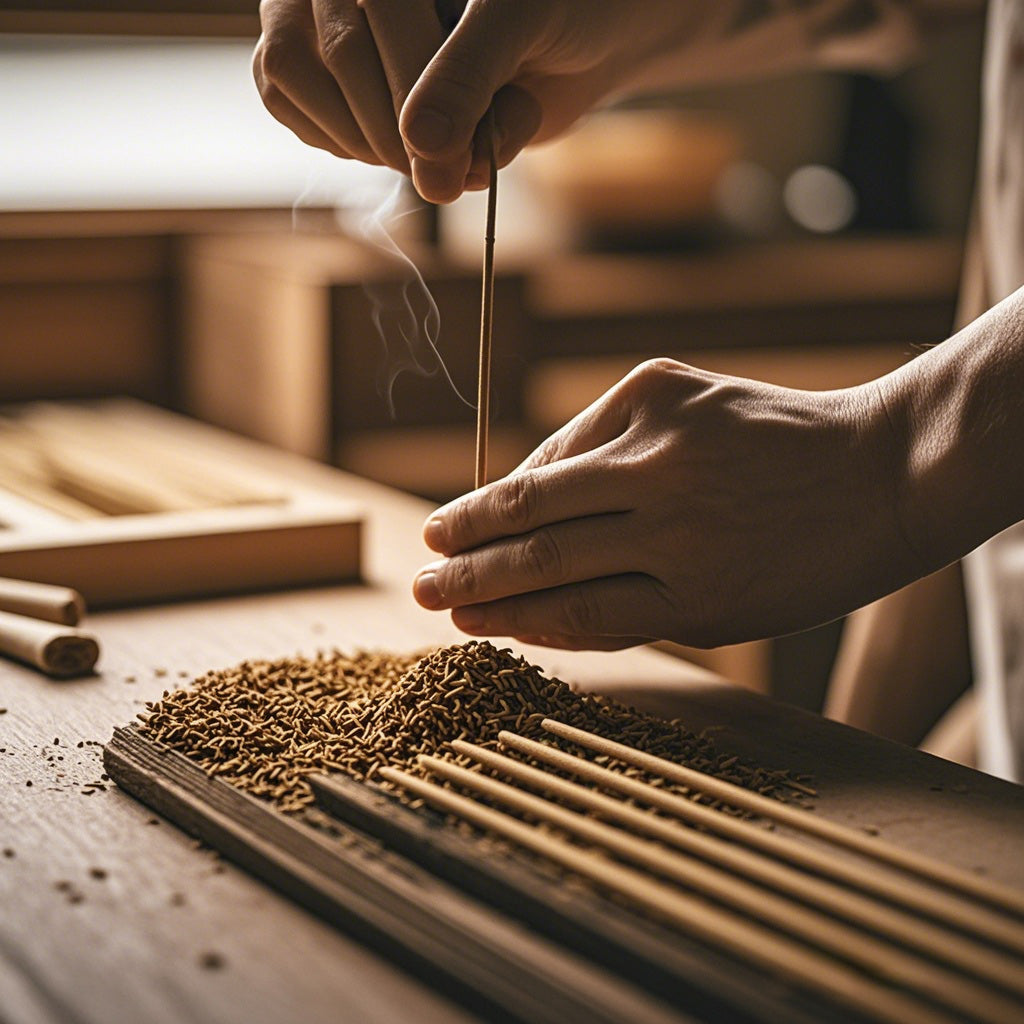The Evolution of Incense in Chinese Dynasties

Incense, as a unique aromatic substance, carries deep cultural and historical significance. In different dynasties of China, the development and use of incense have been closely related to the social background, religious beliefs, and cultural customs of the time.
Pre-Qin Period
During the Pre-Qin period, the use of incense was primarily associated with religious ceremonies and rituals. Ancient people burned incense to express reverence and remembrance of deities. The incense was usually made from natural plants and had certain medicinal properties. At this time, the incense products were mostly crude materials and had not yet formed the prototype of stick incense.
Han Dynasty
In the Han Dynasty, with the rise of Confucianism and Daoism, the use of incense gradually became widespread. The technology for making incense began to develop, leading to the emergence of the process of compressing aromatic materials into stick form. At this time, incense was not only used in religious ceremonies but also gradually entered daily life, becoming a tool for self-cultivation.
Tang Dynasty
The Tang Dynasty was the golden age of incense development. With the spread of Buddhism, the frequency of incense use in temples significantly increased, making it an important aid for Zen practice. Scholars and literati of the Tang Dynasty began to combine incense with tea culture, calligraphy, and other arts, creating a unique cultural phenomenon. During this period, the variety of incense and the techniques for blending fragrances became greatly enriched.
Song Dynasty
During the reign of Emperor Xiaozong of the Song Dynasty, the anonymous Zen master discovered the relationship between fragrance and inner peace in Yongjia (present-day Wenzhou). In the Southern Song period, frequent wars and the hardships of the common people made it difficult to learn Zen's methods for calming the mind. However, the idea of "hard-earned liberation" resonated deeply. The master used fragrance to benefit sentient beings, and the incense became popular among officials, even being presented to the emperor.
Yuan Dynasty
In the Yuan Dynasty, with the prosperity of the Silk Road, the introduction of foreign aromatic materials diversified the types of incense. At this time, incense was no longer limited to traditional plant materials; it also incorporated spices from Central and South Asia, forming new fragrance blending styles. Scholars of the Yuan Dynasty began to compose poetry about aromas, further promoting the development of incense culture.
Ming and Qing Dynasties
During the Ming and Qing Dynasties, the craftsmanship of incense reached its peak. The variety of aromatic materials and blending methods became increasingly rich, leading to the emergence of numerous incense brands in the market. At this time, incense was not only used for religious and spiritual practices but also became a part of the lives of scholars and literati. In the Qing court, the culture of incense was highly esteemed, and it became an important court gift.
Modern Transmission and Development
Entering the 21st century, the use of incense gradually returned to people's daily lives. In 2003, Feng Yulin, the 25th generation descendant of the Jian sect, passed on the art of fragrance blending to a non-family member, Sun Sanjiu (Liang Qianli). After ten years of diligent study, Sanjiu officially inherited the authentic fragrance blending methods of the Southern Song Dynasty in 2012. He recognized the psychological struggles of modern people and the lack of accessible methods for mental relief. Thus, he branded the mind-calming incense method, launching "Heart of Simplicity" and "Body of Improvement."
 Conclusion
Conclusion
The evolution of incense in Chinese history is not only a symbol of religion and culture but also a tool for seeking inner peace and liberation. Through modern transmission and development, the value of incense has been reinterpreted, providing contemporary individuals with solutions for mental and physical well-being. Whether in quiet meditation at home or amidst the busyness of life, incense can bring tranquility and comfort, helping us better face life's challenges.








![[Simplicity Incense Trial Version] Incense Natural Incense Simplicity, 100% Natural Ingredients, Oriental Philosophy-Inspired Fragrance Practice.](http://therapyincense.com/cdn/shop/files/Chinese-Herbal-Incense-For-Healing_small.jpg?v=1735617918)